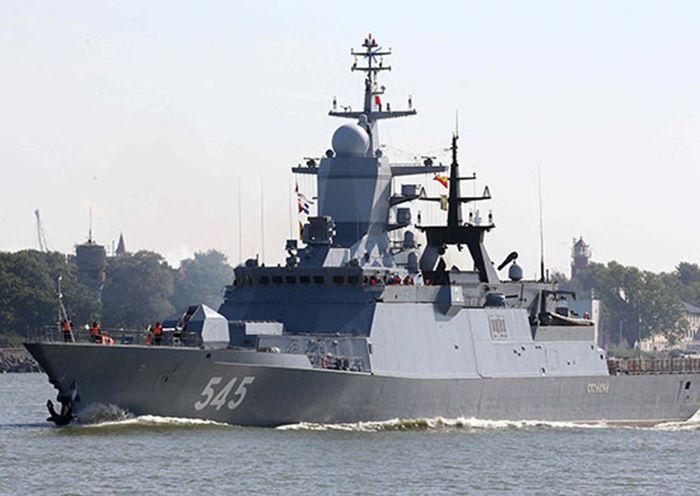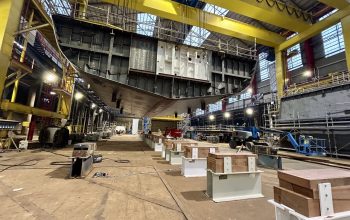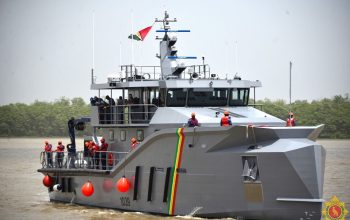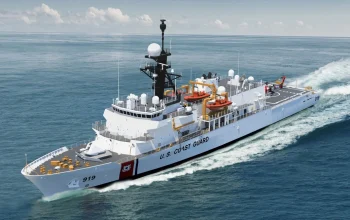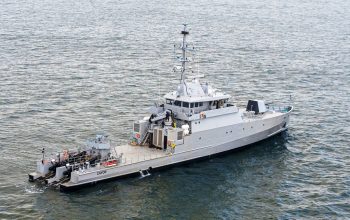As part of the planned deployment to the Baltic sea, the crew of the Baltic Fleet’s Project 20380 corvette Stoiky live-fired an anti-ship missile against against a naval target that simulated a mock enemy’s combat ship. The missile fire was delivered from the corvette’s main strike weapon: the Uran anti-ship missile system. the corvette’s crew also held an exercise for air defense of a ship using the A-190 artillery gun. After accomplishing the firing task, the crew of the corvette Stoiky practiced the personnel’s electronic warfare, ship damage control and anti-saboteur measures, interoperability and communications among the ships that provided for the missile firing.
The Steregushchiy class (Vigilant), Russian designation Project 20380, is the newest class of corvettes being built for the Russian Navy. Designed by the Almaz Central Marine Design Bureau, subsequent vessels were built to an improved design (Project 20381), incorporating the Poliment-Redut SAM system. The Steregushchiy classcarries either eight supersonic SS-N-26 (P-800 Oniks) anti-ship missiles or sixteen subsonic SS-N-25 ‘Switchblade’ (Kh-35E Uran). . It also carries two twin-tube launchers for 533 mm heavy torpedoes. The ship full displacement and dimensions are large for a corvette, thus it is designated as a frigate by NATO. The Steregushchiy class has been further developed into the Gremyashchiy class (Project 20385) and Project 20386 subclasses. The export variant is known as Project 20382 Tigr.
Uran (Uranus) is shipborne anti-ship missile system, which uses Kh-35 missiles. The missiles used by this system are also referred as 3M24. Western reporting name of this system is SS-N-25, or Switchblade. It was adopted by the Russian navy in 2003. It became a successor to the P-15 Termit anti-ship cruise missile (Western reporting name SS-N-2 Styx). Due to the relatively light weight of the missiles the Uran system can be carried even by missile cutters. Missiles are launched from cylindrical containers. These containers are fixed in 35° inclination. Packs of 2 or 4 containers are used, depending on the vessel. These containers can be reloaded.
A190, also known as AK-190 and A-190, is a modernized lightweight version of AK-100 developed by Burevestnik Central Scientific Research Institute that first entered service in 1997. Deliveries started to the RF Navy to replace the AK-176 gun mount in 2012 and more than 30 systems with a firing range of more than 20 km were delivered as of 2020. The A190 is a Soviet 100mm naval cannon, with a maximum rate of fire of 80 rounds per minute, firing a 26.8 kg munition in HE anti-air or HE fragmentation varieties, elevation -15 / +85 degrees and traverse: ± 170 degrees. Typical ammo storage: 80 rounds for a 4,000 ton class corvete. A-190 100 mm gun first used in the Talwar-class frigates is controlled by a 5P-10E system that can track four targets simultaneously.
